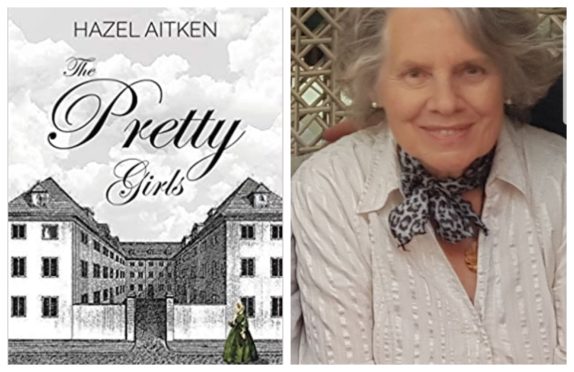
Filled to the brim with trinkets and treasures, it’s possible to find any number of interesting and unusual items in a dust-filled antique shop – but not many are lucky enough to find inspiration for a novel.
While wandering around a second-hand shop in Milngavie, East Dunbartonshire, author Hazel Aitken came across two volumes of records for a Manchester workhouse, which noted in meticulous detail the years between 1858 and 1861.
Although many similar institutions forced people to live in horrific squalor, a new master at this workhouse – or poorhouse, as they were also known – set about making improvements, committing each of his projects to the pages of a journal.
Hazel quickly became enthralled by the real-life characters. However, it wasn’t until more than 30 years later, during a period of sadness and upheaval in her own life, that she decided to fictionalise the characters she had come to know so well.
“I think my husband drew my attention to the records, which were lying to one side in this antique shop,” explained the 77-year-old, who lives in Cupar, Fife.
“I thought they were fascinating, and so detailed. There were huge renovations going on in the workhouse, and a new master named John Eton was brought in. He detailed everything, right down to the outings he organised for the children.”
“I didn’t think of using the real people as inspiration for a novel at the time, but I was so immersed in reading the accounts, they really grew on me. It was almost like reading about family members, and in a way it became almost too personal – I was with them, I was going through their trials.”
Years later, while caring for her husband Ian, who had been suffering from ill health for many years, Hazel decided to revisit her old friends, and began writing The Pretty Girls.
Set in 1860, the novel follows Hannah Morley and her widowed mother, who have fallen on hard times. After finding work at a sprawling workhouse, Hannah becomes concerned for a neighbourhood child, and a mystery soon unfolds.
Hazel explained: “Three years ago, I read a historical fiction novel and I said to my husband, ‘You know, I could do better than this’.
“He replied, ‘Well go on then, try’. I said I would only do it if he would be my proofreader, and he agreed. He was bed-bound at the time, and each time I finished writing a chapter he would read it and come straight back, asking for more.
“He was a great reader, and his criticism was very helpful as it was always very constructive. He would underline passages or put little notes in pencil down the side, which I still have. I’ve got very nice memories of that time.”
A few months after Ian passed away in 2017, Hazel sent her novel off to a publisher, and the first paperback, complete with a dedication to her husband, hit shelves at the end of last year.
Now, continuing to explore the time period she loves, Hazel is working on a new novel set in the Victorian age, Threads Of Evil, which features inspiration for more real-life people.
“I enjoy historical research, particularly the Victorian Age, so it’s another mystery novel,” she explained.
“Only this time, I based the main character on one of my great grandmothers!”
The Pretty Girls, Austin Macauley Publishers, out now

Enjoy the convenience of having The Sunday Post delivered as a digital ePaper straight to your smartphone, tablet or computer.
Subscribe for only £5.49 a month and enjoy all the benefits of the printed paper as a digital replica.
Subscribe